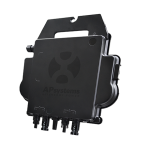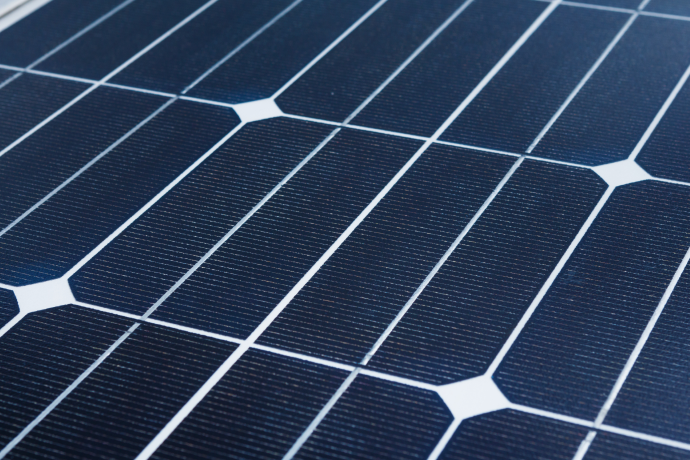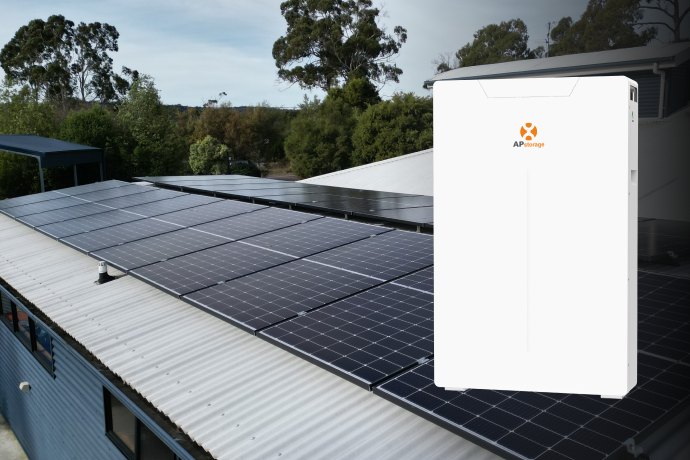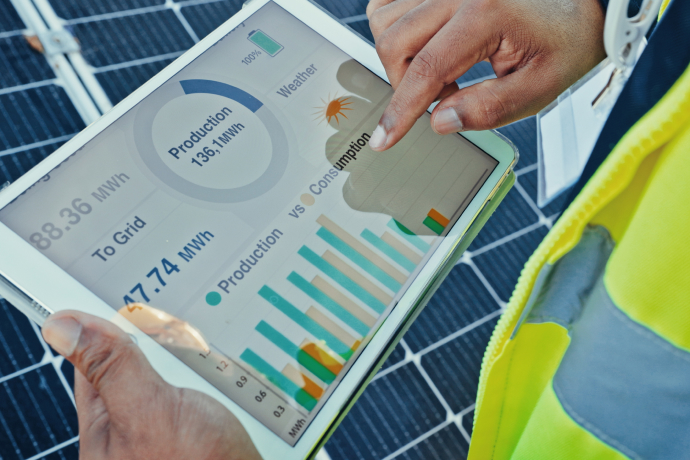If you’re a Tasmanian thinking about upgrading your solar system, adding a solar battery could be a great choice. Batteries can help reduce your electricity costs and keep your house appliances running during an unexpected power outage. The price of your average solar battery will set you back approximately $11,300, however this total cost will depend on several factors. Everything from your location, to the size of your battery and the Tasmanian rebates will determine your final price point. Adding a battery to your home can be a great investment, and if you’re looking to pay less for electricity and increase your savings then solar batteries could be a perfect addition to your solar system.
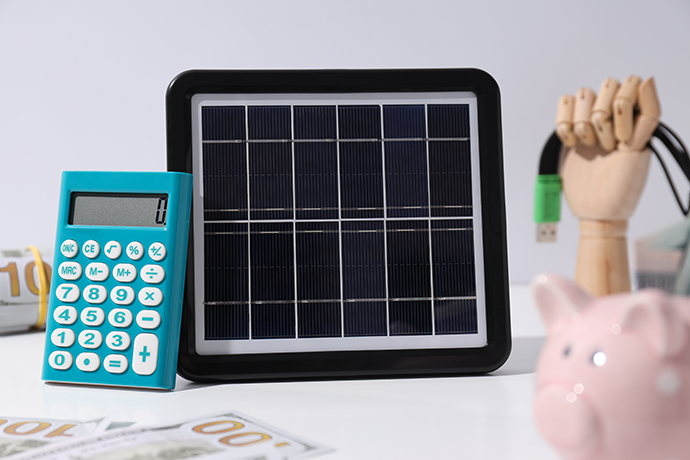
Benefits of Solar Battery
A solar battery is an energy storage device that works directly with your solar system. As your solar panels generate energy from the sun during the day to power your home, any surplus energy can be sent to charge your battery. Your home battery can then be used in the evening as a way to reduce your reliance on electricity bought from the grid. Without a solar battery, any excess energy that is not immediately needed to power your home is returned to the grid. Solar batteries have a range of benefits that could make them a valuable addition to your solar system:
- Saving on energy bills – Solar batteries mean you are less reliant on buying electricity from the grid, using more of the free, solar energy captured by your panels. The grid refers to the electricity network that delivers you power outside of your solar system. Particularly during the day when grid prices are at their highest, between 3pm and 9pm, switching to your solar battery can help you avoid those added costs.
- Solution to feed-in tariffs – Solar feed-in tariffs are the payment you receive for transporting your unused electricity back to the grid. However, in Tasmania, as of 2025 the minimum feed-in tariff rate you receive has decreased from 10.869 cents per kilowatt-hour (kWh) to 8.935 cents per kWh. Installing solar batteries is therefore a great solution to combating this reduced rate, maximising the energy you produce, and minimising your reliance on the grid.
- Environmental benefits – Pairing your solar system with a battery reduces your reliance on electricity generated from fossil fuels. This promotes using energy that is cleaner for the environment and reduces our carbon footprint.
- Backup energy – In the event of a power outage or electrical emergency due to extreme weather, a solar battery can draw from its stored energy to continue supplying your home with electricity. With a backup gateway and critical load panel installed, you can keep your home appliances running throughout these outages.
- Provides energy at night – Solar panels need sunlight to be able to provide electricity. Therefore, during the night, or when it’s a cloudy day, your solar panels won’t be as effective. Using the excess energy stored in your solar battery is a great way to offset energy losses when the sun isn’t shining.
- Noiseless power solution – Solar batteries are a much quieter solution to using a petrol or diesel powered generator, as they are nearly silent. This makes solar batteries perfect for the quiet, residential environment during scenarios where backup power is necessary.
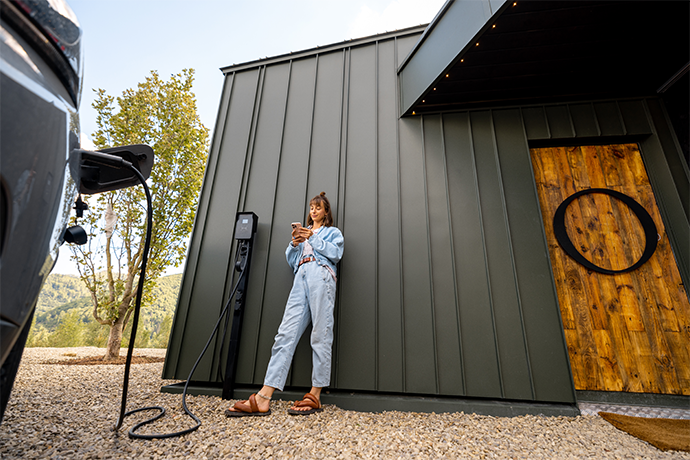
How Much Does a Solar Battery Cost?
The table below displays average battery installation prices. We have compared how much each battery capacity costs, in addition to their cost per kWh. It should be noted that these are average prices. For an exact quote, analysing all of your specific factors, you should reach out to the team at Tasmanian Safer Solar (TSS).
| Battery Capacity | Cost | Battery Cost per kilowatt-hour (kWh) |
| 1-5 kWh | $1,380 – $6,900 | ~$1,380 |
| 6-10 kWh | $6,780 – $11,300 | ~$1,130 |
| 11-15 kWh | $11,550 – $15,750 | ~$1,050 |
| 16-20 kWh | $16,000 – $20,000 | ~$1,000 |
*Includes the installation of the battery only. No rebates or incentives are added.
It is important to mention, these prices are expected to drop in the near future. With more Tasmanians investing in solar batteries, the increased demand will likely drive down costs.
Factors That Will Affect The Price of Solar Batteries
The total cost of your solar battery will be heavily affected by a number of factors. Understanding each factor will be vital for understanding the total cost:
Battery Capacity
Arguably the biggest factor is the size of your solar battery. Measured in kWh, the larger the size of your battery, the more energy your battery can store. A higher kWh battery will result in higher costs, because you are paying a premium for more power storage.
If you are unsure of which battery capacity is right for you, then we highly recommend consulting with your solar installer or contacting our team at Tasmanian Safer Solar (TSS). Generally, if you already have a common 6.6kW solar system installed, you would likely suit a battery with a capacity of at least 10kWh.
Federal and State rebates for solar batteries
Federal and state rebates can play a crucial role in making your solar batteries much cheaper, dramatically improving your overall cost and payback period. Beginning on July 1, 2025, an Australian-wide federal battery rebate will be offered to cover up to 30% off the cost of a home battery system. It will provide Tasmanian’s a max rebate of $372 per usable kWh, which potentially reduces the cost of a standard 10 kWh solar battery by $3390. It’s also important to mention that batteries installed before July 1, 2025, can still qualify for this rebate, as long as they are not switched on until after this date.
While there isn’t a state-level rebate for solar batteries in Tasmania, locals do have access to the Tasmanian Government Energy Loan* scheme. These are interest-free loans which make it easier for Tasmanians to fund the purchase of energy-efficient products such as solar batteries. The loans can range from $500 to $10,000 over three years. To be eligible, the battery must be purchased and installed by an accredited installer.
Battery type
Your battery type will also affect your final price. Solar batteries come in four main types.
- Lithium-ion batteries – The most popular type of residential installations, these types of batteries store energy by using the movement of lithium-ions. They are great because they have strong performance features and store a large amount of energy within a limited space. They have a long lifespan (typically 15 years) and generally require less maintenance compared to other battery types. However, they are more expensive than the other battery types.
- Lead acid batteries – Lead acid batteries of today are increasingly rare and dated. Although they can hold a lot of power, lead acid batteries can be quite slow charging. They’ve been found to take up to 14 hours to reach 100 per cent capacity, compared to just 3 hours for a lithium-ion. These batteries are also required to be replaced much more often, however they are the cheapest of the four main types.
- Nickel-cadmium batteries – Not as popular as lithium-ion batteries, primarily because of their inability to hold a large amount of energy for their size. However, they are an incredibly durable battery which can work much more effectively in extreme temperatures. You should expect these battery types to cost about half as much as lithium-ion and approximately double a lead-acid.
- Flow batteries – The newest addition to the industry, flow batteries operate using a water electrolyte that flows between the two chambers in the battery. Because of this technology, flow batteries are growing in popularity because of their much longer lifespan and their suitability for repeated, extended use. Because they are a relatively new technology, flow batteries will be the most expensive option.
Installation Costs
The installation process will greatly influence how much you pay. More complex installations will require more labour and will generally lead to higher costs. For example, if you chose to install your solar battery at the same time as your solar panels, your labour costs may be lower because all the system integration and connection will be done together. Adding extra cabling, safety bollards, or a sun shield can all increase installation costs. It is vitally important to get your system connected by a trusted installer with proper experience to ensure you don’t run into problems down the road.
Location
Where you are located will generally affect the price of your battery. For instance, people living in regional areas should expect higher prices due to the higher transport and installation costs associated with their location. Furthermore, depending on where you live, you may be eligible for different rebates and incentives. We are lucky in Tasmania to have access to the Tasmanian Government Energy Loan* scheme, with interest-free loans of up to $10,000. Victoria has a similar system, known as the Victorian Solar Battery Loan Scheme, however, their interest-free loans only have a maximum of $8,800.
Balance of System (BOS) Equipment
It generally won’t just be your battery that you’re installing. For your system to run at full capacity, other pieces of equipment are also required. This can include the following:
- Backup gateway – A backup gateway can be used to detect power outages and disconnect your house from the grid if one occurs. It basically acts as a switch, removing you from the grid and switching you over to the battery for electricity. You should expect a backup gateway to cost an additional $1,700.
- Critical loads panel – Most solar batteries don’t have enough power to back up your entire home during a power outage, they will require a critical loads panel. This sub-panel houses the important circuits that your battery can prioritise in the event of an outage. So when the power goes out, your backup gateway switches to the battery, which feeds the critical loads panel and your most important appliances. Examples of critical loads could include your refrigerator, lighting, wifi services, or heating systems. An added critical loads panel should set you back between $1,000 and $2,000.
Battery Savings and Payback
Let’s now take a look at how adding a solar battery can affect your overall savings and payback period. Our table below presents the cumulative savings of just a solar system, in comparison to one with a 10 kWh battery added:
| Setup | Total System Cost | 1 Year Savings | 10 Year Savings | 20 Year Savings |
| No Battery | $6,600 | $1,170 | $10,955 | $22,352 |
| With 10 kWh Battery | $17,900 | $1,598 | $16,612 | $36,198 |
The table above is an illustration of how much money you can save with a solar battery. We have compared a 6.6kW solar system with and without a 10kW battery. (A 6.6kW solar system was chosen as this is the average size for a residential property. A 10kW battery was chosen as this is a good capacity for a 6.6kW solar system). Assumptions also include:
- 10 kWh battery cost: $11,300
- Cost of usage per kWh: 30c
- Daily supply charge: 123.84c
- Feed-in tariff per kWh: 9c
It is important to mention we have calculated these savings using the above assumptions. Changing weather conditions, added maintenance costs, or the efficiency of your solar panels can all alter these results.
Based on these savings, the total system cost would be paid back in 10 years and 9 months. In comparison, a solar panel system without a battery would pay itself off in about 6 years and 2 months. While the battery adds time to the payback period, this calculation does not include any rebates or incentives. For example, the 2025 federal battery rebate could reduce the upfront cost of a 10 kWh battery by up to 30% (around $3,390). With this rebate applied, the payback period shortens to about 8 years and 11 months. Additionally, using the Tasmanian Government’s interest-free Energy Loan could reduce this timeframe even further by easing the upfront financial burden.
Although they require a longer payback period, the long-term savings of investing in a solar battery are substantial. 20 years after your initial investment, we have calculated an average savings of $36,198, compared to just $22,352. With system costs factored in, you are $2,546 better off after 20 years with a solar battery, which will only continue to rise going forward.
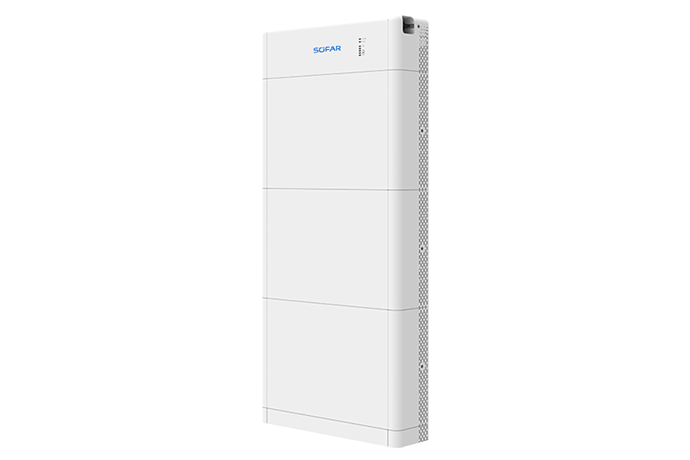
Image Credit: Sofar
How Long Do Batteries Last?
Understanding how long your batteries will last is an important consideration after cost. Generally, within a cooler climate such as Tasmania, you should expect your batteries to last 15 to 17 years. Most manufacturers will provide a warranty of 10 years for your solar battery. Regardless, if you want to maximise the lifespan of your battery, you should be aware of these factors:
- Extreme temperature – Batteries do not enjoy being exposed to extreme temperatures, which can reduce their lifespan. Parts of Australia where extreme temperature variations are relatively common should expect their batteries to decline more rapidly. Iimportant for Tasmanian residents battling snow or low temperatures, such as those near the central highlands, and the state’s mountain regions. Because batteries generate electricity through the movement of ions, cold temperatures slow down these reactions, with your battery delivering energy at a reduced rate. This means your battery discharges less efficiently delivering less power.
- Battery usage – You will notice that the more times you use your phone, its battery won’t last as long between charges. This is an inevitability with batteries; the more you charge and use them, the less time their charge will last. So your solar battery’s lifespan will heavily depend on how often you use it.
- Battery type – Of the four main battery types, flow batteries will have the longest lifespan (25 years), followed by lithium-ion (15 years). The less widely used nickel-cadmium has a lifespan of 10 to 15 years, with the cheaper lead-acid battery having the shortest lifespan at just 3 to 5 years.
Are Solar Batteries Worth It?
Whether or not solar batteries are worth it will ultimately depend on your own individual needs. From a cost saving perspective, solar batteries are a great way to minimise your electricity bills. Particularly, if you add in the rebates and incentives, batteries can reduce your overall reliance on the grid.
If you are living somewhere with frequent power outages, investing in a solar battery is definitely worth considering. Particularly when compared to a gas generator, which needs fuel and can be incredibly loud for a residential setting.
Ultimately, solar batteries are great for houses looking to reduce their grid usage, have access to rebates, or are just looking for power during blackouts. Particularly with the introduction of the new federal rebate in July, 2025, there has never been a better time to add a solar battery to your system.
Although solar batteries can be a great choice for Tasmanian’s, their overall cost will depend on a range of factors. While we calculated the price for a standard 10 kWh battery to be $11,300, with rebates, location and installation fees added on, you should expect a different price to match you. For more information on solar batteries, and their cost, please contact your local experts at TSS.
*This article refers to the Energy Saver Loan Scheme, which closed to new applications in September 2025

